Feasibility study of intelligent autonomous determination of the bladder voiding need to treat bedwetting using ultrasound and smartphone ML techniques : Intelligent autonomous treatment of bedwetting
- PMID: 30588575
- PMCID: PMC6477014
- DOI: 10.1007/s11517-018-1942-9
Feasibility study of intelligent autonomous determination of the bladder voiding need to treat bedwetting using ultrasound and smartphone ML techniques : Intelligent autonomous treatment of bedwetting
Abstract
Unsatisfactory cure rates for the treatment of nocturnal enuresis (NE), i.e. bed-wetting, have led to the need to explore alternative modalities. New treatment methods that focus on preventing enuretic episodes by means of a pre-void alerting system could improve outcomes for children with NE in many aspects. No such technology exists currently to monitor the bladder to alarm before bed-wetting. The aim of this study is to carry out the feasibility of building, refining and evaluating a new, safe, comfortable and non-invasive wearable autonomous intelligent electronic device to monitor the bladder using a single-element low-powered low-frequency ultrasound with the help of Machine Learning techniques and to treat NE by warning the patient at the pre-void stage, enhancing quality of life for these children starting from the first use. The sensitivity and specificity values are 0.89 and 0.93 respectively for determining imminent voiding need. The results indicate that customised imminent voiding need based on the expansion of the bladder can be determined by applying a single-element transducer on a bladder in intermittent manner. The acquired results can be improved further with a comfortable non-invasive device by adding several more features to the current features employed in this pilot study. Graphical Abstract Ultrasound device design: echoed US pulses reflected from the bladder and related tissues around the bladder is detected. These pulses are analysed, and an alarm is triggered when needed to treat nocturnal enuresis.
Keywords: Bladder volume determination; Machine Learning; Nocturnal enuresis; Ultrasound physics.
Figures


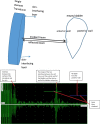
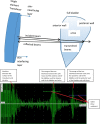








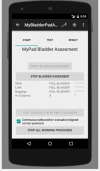
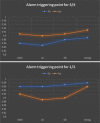



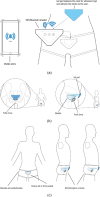
References
-
- Kiddoo D (2015) BMJ clinical evidence 2015(0305). http://www.ncbi.nlm.nih.gov/pmc/articles/PMC4292411/ - PMC - PubMed
-
- Ansell DW, Sanders C, Leather P, Kuru K, Amina M (2017) Methods and apparatuses for estimating bladder status. https://patentscope.wipo.int/search/en/detail.jsf?docId=WO2017017426
-
- NICE (2015) Bedwetting under 19s. https://www.nice.org.uk/guidance/cg111/resources/bedwetting-in-under-19s...
MeSH terms
Grants and funding
LinkOut - more resources
Full Text Sources

